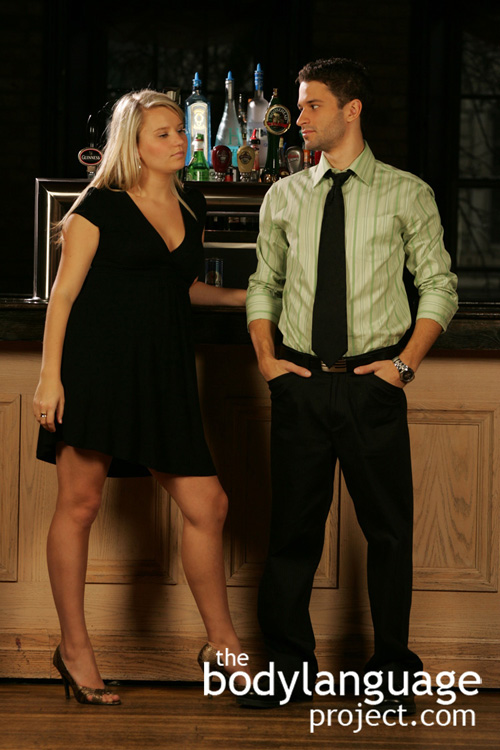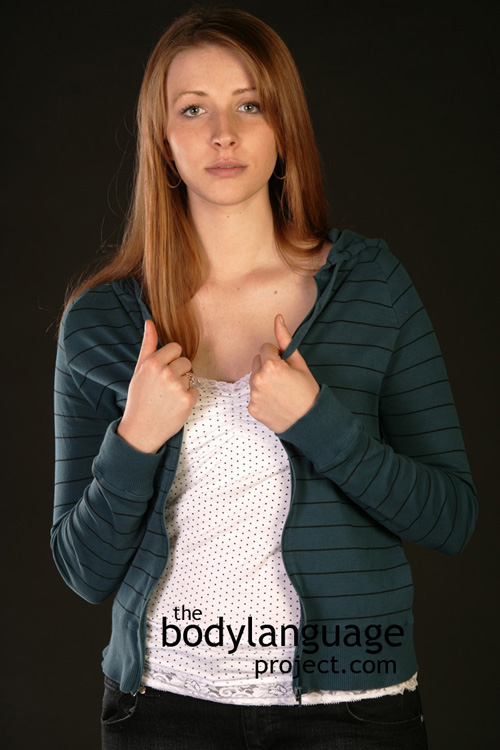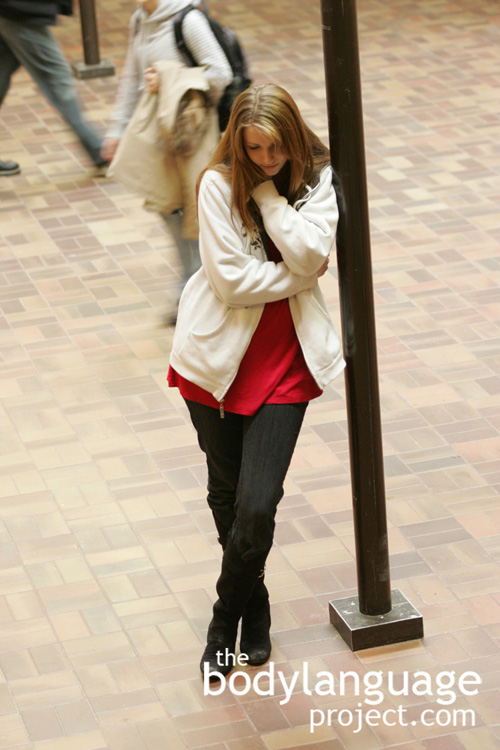“Pressing the flesh” or handshakes are a very important ritualized greeting gesture that has gained worldwide popularity. How someone presents their hand during a handshake tells us a lot about how they see their relationship with us. There are three main palm orientations that can occur during handshakes. They are palm down (dominance or superiority), palm up (submissiveness) and palm even (equality). A palm down orientation emphasizes that a person wishes to control and dominant by taking the upper position forcing the other person’s palm down into a subordinate position. The palm down orientation is similar to placing the hand on the shoulder, which a boss might do to an intern to keep him in his place or a father might do to his son to settle him down. Conversely, the palm up offering shows a desire to submit since the hand is passively turned over allowing someone else to dominate them. Finally, the palm even or vertical is an attempt to build a cooperative, egalitarian relationship and shows a desire to produce a positive relationship.
The most universally appropriate orientation for the handshake is to have palms even and vertical, especially on a first meeting. Handshakes set the tone for the rest of the relationship though, and are often the only time two people will ever touch, so sometimes we might use alternate orientations depending on the goals we seek. A palm down technique can be used against a more subordinate individual to keep them in their place, and due to their lower rank, would tolerate it, perhaps even expect it. Anyone lower in the food chain is fair game for the palm down technique, although, I still recommend that people try to show their desire for equality from others rather than trying to show dominance. A boss will rarely tolerate the palm down maneuver from a subordinate. You may notice a strong visceral reaction from handshake jousting as it were, so heed these tips with caution. Pulling off dominance type handshakes usually amounts to not much more than negative feelings and makes others feel uncomfortable rather than making them feel subordinate as intended. If you really wish to dominate and control people than using territorial displays, invading people’s space and using strong eye language is much more permitted and effective.
It is common for people in equally powerful positions to jockey for the upper hand. Failing to show dominance through nonverbal means in the workplace can be disastrous when one intends to rise in the ranks. When performing the palm down handshake it is not necessary to thrust your arm forward with palm perfectly parallel with the ground. Doing so might even make the handshake impossible or confusing to your counterpart because it can be mistaken for some other gesture. Instead, move the hand forward with a slight downward angle such that it forces their hand to meet and rotate upwards. Once hands meet don’t try to twist, instead maintain the same angle and begin your two to three pumps. For best results always be sure to hold eye contact while shaking hands, smile slightly, use good but not excessive pressure and leaning forward slightly to convey extra interest.
It might seem that the palm-up orientation has no place at all in the handshake world, but this is not so. It can be used to placate higher authorities in order to demonstrate your desire to please them. Such is the case when a boss of much higher status meets an employee low in the ranks. The palm up shows that he is keen to keep his job and doesn’t present any threat. Someone who has crossed the line at work and is facing reprimand is best suited to at least feign his intent to set the record straight. There will be times too, that it is unfeasible to reverse the palm down technique which can cause very negative feelings so going with the flow is the second best course of action. To initiate a more equal relationship, despite taking up a palm-up orientation, you can add additional pressure at the beginning of the handshake which shows that you aren’t a complete pushover. This tells others nonverbally that you deserve a second look and that you aren’t interested in sucking up.
Duration and pressure are two other very important aspects of a good handshake. A handshake that is too short indicates lack of interest, warmth and enthusiasm, whereas a handshake that is of proper duration shows interest, attention and empathy. However, if the length of time increases much more than ordinary, the positive characteristics quickly vanish only to be replaced by negative ones. When handshakes last too long they aren’t usually aggressively protested, but your partner may seem to pulling back or away slightly. The greatest damage to over-shaking will be seen in their impression of you and will be carried forward possibly creating problems later on. The handshake is usually the first time two people touch and so is an important gesture in our first impressions, and because touch happens so rarely handshakes become etched in our minds.
Pressure and duration testing are great ways to decide if, or how strongly, someone will resist your authority. During the handshake add more pressure and increase the length of your handshake, if it’s not met with additional pressure or is met with an attempt to pull away, you can be fairly certain that your demands will be met with little resistance.
If pulling away does happen, check to see how it is done because this can be indicative of the method and strength by which people use to cause issues later on. If the attempt is weak or ineffective, than there is a good chance resistance will appear in hidden forms later on, but if they pull back confidently you can expect an open battle.
We can also tell a lot about a person by the texture of their hand. A skilled tradesmen who works fulltime building houses will have callused hands, whereas a lawyer would not. Sometimes a mixture of the two is present as is the case with the lawyer who runs a hobby carpentry outfit on his weekends. So while we can use hand features to determine congruencies, we also must exercise some caution. Regardless, hands, their strength and character can give away some tells about a person and their habits so while we are at it, meaning shaking hands, we might as well collect these cues as they may come in “handy” in the future.



